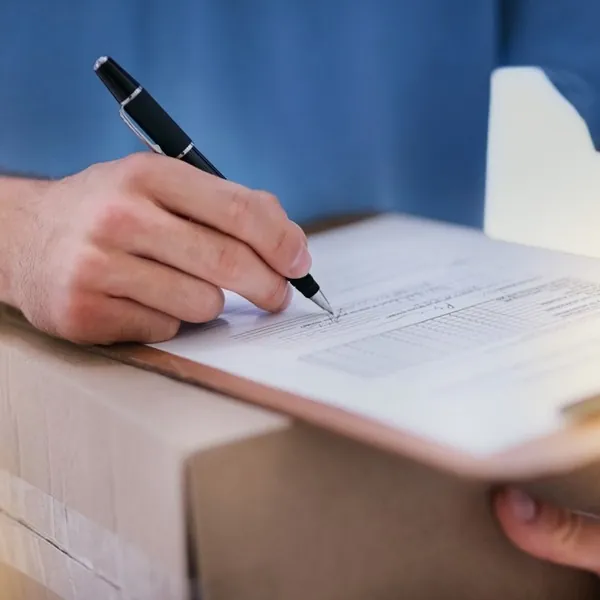
The International Shipper’s Checklist
April 26, 2022 by Matt Brosious
The International Shipper’s Checklist Part 3: Shipper Paperwork
Now that you know which way the wind blows when it comes to shipping ability and packaging and have made a first mate of your customs broker. It’s time to coordinate a schedule and prep your shipper paperwork. Since there’s so much overlap between these two steps, we decided to put them together.
Thousands of businesses trust FreightCenter to move their freight faster, smarter, and cheaper! From unbeatable rates to top-notch service, our customers are raving about their shipping success.
See why they keep coming back!
Award-Winning Service, Trusted by Shippers Everywhere!
- 2021, 2017 & 2016 Food Logistics’ Top Green Providers
- 2021 & 2018 Supply & Demand Chain Executives’ Pros to Know: Matthew Brosious
- 2020 & 2019 Top Food Logistics’ 3PL & Cold Storage Provider Award
- 2020 & 2019 Business Observer’s Top 500 Companies on the Gulf Coast
- 2020 & 2017 SmartWay® Transport Partner
- 2020 & 2017 Food Logistics’ Champions: Rock Stars of the Supply Chain
- 2020 Best of Palm Harbor Awards for Local Businesses
- 2017 Green Supply Chain Award from Supply & Demand Chain Executive
- 2017 Tampa Bay Business Journal Heroes at Work
- 2016, 2015, & 2012 Food Logistics Top 100 Software and Technology Providers
- 2013 Tampa Bay Business 100 by Tampa Bay Business Journal
- 2013 Top 100 Great Supply Chain Partners by SupplyChainBrain
- 2012 TIA Samaritan Award Honorable Mention
- 2012, 2011 & 2010 TBBJ Fast 50 Recipient
- 2013, 2011, & 2010 Diversity Business Top Businesses
What Should I Know About Shipper Paperwork?
Everything! As with all shipping, there will be a lot of paperwork for shippers. There’s much more shipper paperwork when planning to ship across global borders and overseas. We want to stress the importance of going over your paperwork. Due to it being the first place things go wrong for many new global shippers. If the paperwork is wrong, this can disrupt your shipping schedule.
So, remember: Whether you’re shipping nationally or globally, most issues with shipping occur due to incorrect or missing documents. The slightest variance in your paperwork can lead to extra charges or carrier inspections. Meaning your freight will take longer to get where it needs to be (and we’ve already established it’s going to take a while). Have your documentation and copies of it set?
What Are Incoterms?
Before giving your shipper paperwork your John Hancock, you should acquaint yourself with standard contract terms. Terms you’ll come across while drawing them up. We refer to these specific terms as Incoterms. “Incoterms®” is an acronym that stands for global commercial terms. This is a trademark of the International Chamber of Commerce, registered in several countries. Incoterms, like FOB (Free on Board) or FAS (Free Alongside Ship), are acronyms.
These are terms you’ll see in import and export contracts. They explain how long the supplier will be responsible (and liable) for the commodity before the buyer receives it. It’s easy to gloss over such terms—every day, in fact—and mix them up during the negotiation stage, which can put massive stress on your pockets. Building up your understanding of incoterms will lead to better customer service and dole out responsibility to those involved. The Most Common Incoterms Are:
- EXW (Ex Works)-The seller packages the goods and prepares them for pick-up, while the buyer is responsible for transport costs and risks. This favors the seller.
- FOB (Free On Board)- Location usually follows the designation of FOB, and it’s pertinent to how you use the term. FOB destination means the seller is responsible for transport costs (as well as risks) while the freight is in transit. Its shipping point, or sometimes origin, means that the buyer is responsible for multiple things. For the transport costs (as well as risks) while the freight is in transit.
- CIF (Cost, Insurance, and Freight)-The seller is responsible for costs, freight, and insurance (it’s in the name). Against the buyer’s risk of loss, or damage to the goods, while in transit.
- CPT (Carriage Paid To)-The seller is only responsible for making sure the freight arrives at the carriers safely. As soon as the cargo is at the carrier’s, liability shifts from the seller to the buyer. After the seller drops the load off at a carrier or an agreed-upon place, the seller pays the cost—the cost to transport the goods to the landing place.
- DDU (Delivered Duty Unpaid)-The seller is in charge of safely delivering the freight to its landing place. They are responsible for paying transit costs and liability for damage. Once the cargo arrives safely, liability transfers to the buyer; this includes any subsequent transport costs.
- DDP (Delivered Duty Paid)-The seller takes on all responsibility: costs, risks, export/import customs, etc. Until the freight has arrived at its landing place.
Documents and Shipper Paperwork to Ensure Safe Passage
There are four documents you should look out for. The commercial invoice, the certificate of origin, the NAFTA certificate, and the electronic export information. What are those, you ask?
- A commercial Invoice is one of 2 documents that lists the country of origin. You must list the country of origin on every commercial invoice for every shipment and each product enclosed.
The commercial invoice establishes the products you’re shipping. This is the primary document for valuation, importation control, and duty resolution. The information on it will help determine your export tariff rates. - The exporter (you!) must sign the (CO) Certificate of Origin. To certify the country of origin for each product in your shipment. This certificate is required by some countries for all or specific products you’re importing. There are some cases when you must notarize this document.
- The NAFTA Certificate of Origin is another version of a certificate of origin. However, it is specific to transits between Canada, Mexico, and the U.S.
- The Electronic Export Information (formerly Shipper’s Export Declaration), or EEI, is the most common of all export documentation. Due to being used to document export statistics. You or your freight forwarder is in charge of filing it. It’s required for shipments over $2,500 and for any shipments requiring an export license.
This document is necessary for all current and former U.S. territories, though they are not technically exports. It isn’t necessary for Canada unless the item being shipped requires an export license.
Global parcel shipping has its own set of customs documents and clearances. It’s much cheaper to ship parcel globally than it is to ship freight. As the customer will only be responsible for duties and taxes.
Get Your Schedule Right
Shipment times are estimated, not promised, for domestically shipped freight unless you choose guaranteed shipping. So, imagine what it’s like for global shipping. A number of delays could keep your freight from point B since the journey isn’t just measured by distance. However, the amount of checks and border inspections freight must pass through.
This is why paperwork is so crucial. Missing paperwork will cause significant setbacks. Determine how long it will take to ship your item—when it’s expected, how many legs it will take, and the estimated transit time. Familiarize yourself with the path your freight will travel and carve out an estimated time frame. Give yourself plenty of wiggle room. Having a customs broker on your side will be invaluable during the process.
For some countries, the option of overnight delivery may not be available at all.
See You at the Next Port of Call!
We’re about to pull into our final landing place, everyone! Disembark with us at the final segment of The International Shipper’s Checklist, where we’ll discuss insurance. See you there!
For shipping within the U.S. and to or from Canada, use FreightCenter’s free online quote tool to get started. For other locations, call our global shipping experts at 800.716.7608.
To create value for our customers by delivering customized shipping solutions that meet their unique needs and to fulfill shipping demands from simple to complex with expertise, guidance and ingenuity.
Trust the experts at FreightCenter to give you the best prices and the most comprehensive options for all your LTL freight shipping needs.
We deliver optimized solutions for full or partial truckloads and competitive dry van, flatbed, and refrigerated freight pricing. We can cover your full truckload shipping needs.
Nationwide Expedited Trucking services move your freight securely and rapidly. Your freight requires fast delivery; our freight shipping experts can get your shipment fast, whether in one large box or a full truckload.
The most reliable Specialized Freight Services rates from all the top carriers are just a few steps away. From white glove service to international shipping, we've got you covered.


